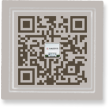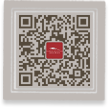- 中文
- EN
- Français
- 日本語
- 한국어
- 繁體中文
Five Hundred Years of European Paintings Exhibition kicked off in the Hunan Museum
In the midst of global efforts to fight against COVID-19, for the purpose of spreading outstanding cultures, showing global and regional cultural achievements, promoting multicultural interactions, and boosting cultural confidence, the Hunan Museum has imported significant European art collections from the Newfields Indianapolis Museum of Art to co-organize the first special exhibition in the Hunan Museum in 2020 — "From Renaissance to Impressionism: Five Hundred Years of European Paintings" (hereinafter referred to as "Five Hundred Years of European Painting"). The exhibition kicked off on the morning of May 29, 2020 at the Art Hall of the Hunan Museum.

Relevant leaders of Hunan Provincial Bureau of Cultural Heritage, leaders, experts from more than a dozen domestic culture and art institutions, as well as museum board members, senior members, media representatives were invited to attend the opening ceremony. The opening ceremony was presided over by Chen Xuliang, Deputy Director of the Hunan Museum. At the ceremony, Duan Xiaoming, Secretary of the Party Committee and Director of Hunan Museum, and Zhu Shunde, Chairman of the Hunan Provincial Fine Arts Association and Professor of the Academy of Fine Arts of Hunan Normal University, delivered speeches.
Founded in 1883, the Indianapolis Museum of Art is an encyclopedic art museum. The collection contains more than 50,000 important works of art from Europe, America, Africa and Asia, spanning more than 5,000 years of history. The museum boasts featured collections including neo-impressionist paintings, Japanese paintings during Edo period, and Chinese ceramics and bronzes. As early as mid-March 2018, the director of the Indianapolis Museum of Art and his entourage visited the Hunan Museum, and signed a "Memorandum of Friendship and Cooperation" with the Hunan Museum,which marks the formal beginning of the journey of cooperation. This exhibition is the first major cooperation achieved by the two museums.
In the exhibition “From Renaissance to Impressionism: Five Hundred Years of European Paintings”, 60 European masters’ paintings from the Indianapolis Museum of Art at Newfields were particularly selected. The 60 chosen artworks, with extraordinary techniques and significant artistic value, offer an overview of European paintings from the 14th to the 19th century. Works of the most eminent European masters such as Titian, Rubens, Rembrandt, El Greco, Goya, Turner, Monet, Gauguin, Renoir, etc., are included. Artworks of the exhibition cover different geological regions including Italy, the Netherlands, England and France, and contain principal phases and major schools of European art history including the Renaissance, Baroque, Rococo, Naturalism and Classicism, Neoclassicism, Romanticism, Realism and Impressionism. During this historical period (14th to 19th century), the European economy grew at an unprecedented rate, the society were under radical changes, and the art of painting witnessed major evolution from classics to modernism, with its historical meaning and profound influence lasting till today.
The exhibition is divided into five chapters. Chapter One, "Religious Painting, 1350–1700", presents religious paintings from the Renaissance and Baroque periods, showing that artists in Italy and elsewhere in Europe became interested in portraying religious scenes with a more natural and intuitive style, while some painters turned to classicism for inspiration. By the end of 17th century, painters from the Protestant regions developed a complex realistic style of painting that was applied to religious painting. The St. Matthew by El Greco, a spainish pioneer artist, became a representative of Renaissance fantasy style because of its slender figures and fantastic colors, while the Triumphal Entry of Constantine into Rome by Rubens and the Entry of Christ into Jerusalem by Van Dyck fully express the typical Baroque style.

El Greco, St. Matthew(about 1610–1614)

Peter Paul Rubens, The Triumphant Entry of Constantine into Rome (About 1621)

Anthony van Dyck, The Entry of Christ into Jerusalem (about 1617)
Chapter Two, "Messages in Painting:European Allegory, Still Life and Genre Painting, 1600–1750", shows the development of the new genres of paintings including allegory, still life and genre paintings in the century and a half following the end of the Renaissance. These paintings often embody connotations beyond the comprehension of modern viewers, reflect themes or abstract concepts, demonstrate moral meanings by presenting intricate stories, or show the impermanence of the world, etc. Still Life with a Chinese Porcelain Jar by William Kalf reflects the bustling business condition between Dutch and other countries in the 17th century as well as the fact that porcelain had became a symbol of wealth and status for Europeans at the time; The Joys of Motherhood by Jean-Honoré Fragonard depicts the beauty of French aristocratic women.

William Kalf, Still Life with a Chinese Porcelain Jar (1669)

Jean-Honoré Fragonard, The Joys of Motherhood (about 1754)
Chapter Three, "Vivid Resemblance: Portraits in Europe, 1550—1800", shows the development of portraits in Europe during the late Renaissance, Baroque, and Rococo periods. During the Renaissance, in the traditional Catholic areas, aristocrats and priests preferred to order rare and expensive colored portraits. Painters therefore racked their brains to absorb inspiration from ancient Greek and Roman culture to portray people’s ideal characters and humanity. Portrait of a Man by Titian extracts the feature of the figure and endows the figure with ideal beauty and elegance through simple geometric structures. In the 16th century, the idealistic description by artists in Protestant regions was substituted with a simpler, more direct method: focusing more on the human nature and personal characters of the figure, being adept at capturing and moulding the unique features of the prototype, and endeavoring to show the charisma of the figure. Self-Portrait by Rembrandt van Rijn reproduces the most delicate details of his face and captures his own features as an ambitious and self-aware artist at the age of 23.

Titian, Portrait of a Man (about 1508–1510)

Rembrandt van Rijn, Self-Portrait (about 1629)
Chapter Four, "Painting Nature: European Landscapes, 1600–1750", shows that landscape painting as an independent genre, evolved from the religious paintings by famous painters in northern Europe from the 14th to the 15th century. By late 16th century, Pieter Bruegel the Elder began to create naturalistic landscape paintings, and his son Jan Brueghel the Elder continued his style with his painting River Landscape. In the 17th century, landscape paintings flourished at both the south and north sides of the Alps. At that time, Rome gradually became the center of landscape paintings, while landscape paintings themed with rural landscapes and mythological or biblical figures, as well as civic landscape paintings, also developed.

Jan Brueghel the Elder, River Landscape (1612)
Chapter Five, "Modifying Traditions: European Art & Impressionism Since 1800" demonstrates the period when the middle class and the art dealers became the major art patron as the art center of Europe transferred gradually from Italy to Paris, France. The neo-classical and academic painters began to pay attention to expressing personal views and creating new styles. The Fifth Plague of Egypt by William Turner focuses on capturing the dramatic actions and atmospherics of nature, and his innovation has deeply influenced the impressionists. After that, the impressionists and their followers continued to try new painting styles and techniques. adopted a brighter, more emotional, and even clear stroke to represent the lighting effect and atmosphere in specific environment. They put more focus on the process of painting, and no longer stuck to the resemblance of the painted subject. Little Girl with a Hat by Pierre-Auguste Renoir and Charing Cross Bridge by Claude Monet both fully represent the impressionist techniques.

Joseph Mallord William Turner, The Fifth Plague of Egypt (1800)

Pierre-Auguste Renoir. Little Girl with a Hat (1894)

Claude Monet, Charing Cross Bridge (about 1900)
The exhibition is now open to the public until September 13th, 2020 in the Temporary Exhibition Hall, No.2 on the 1st floor of Hunan Museum. We cordially invites visitors from all over the world to explore the “Five Hundred Years of European Paintings” and witness the evolution of art from classical period to modernity.
In addition to these wonderful exhibits, the exhibition also introduces a number of digital interactive projects, such as “Invisible Art Wall”, exhibition booklets, “Deciphering Art" that interprets art via AR, "Me in the Paintings" which provides photo frames in artwork styles, and "Disappeared Artworks" featuring AR photo shooting, etc. These projects, as dynamic displays, complement the static exhibits, enriching the content and delivering better experience to our visitors. Furthermore, the related cultural and creative products and exhibition catalogue for this exhibition are now provided, visitors can select exquisite objects that incorporate elements of the exhibits after visiting the exhibition and take them home. During the exhibition, experts in the curatorial team will broadcast live shows around the theme of the exhibition in succession, which allows the audience to interpret deeper meanings and appreciate the beauty of European painting art better.
Tips:
Full-price ticket: RMB 50 per person
Concession ticket: RMB 25 per person (full-time undergraduate students and below, people aged 60-65 years old, low income households, enjoy price concessions with valid documents.)
Free admission: Children under 14 years old, elderly people over 65 years old, persons with disabilities, military personnel in active service and retired military cadres with valid documents.
Date: May, 29th, 2020-Sep, 13th, 2020
Opening hours: 9:00-17:00 every Tuesday to Sunday(latest admission at 16:00)
Closed on Mondays, except for public holidays.
Venue: Temporary Exhibition Hall, No.2 (1F)
Tel:0731-84415833



